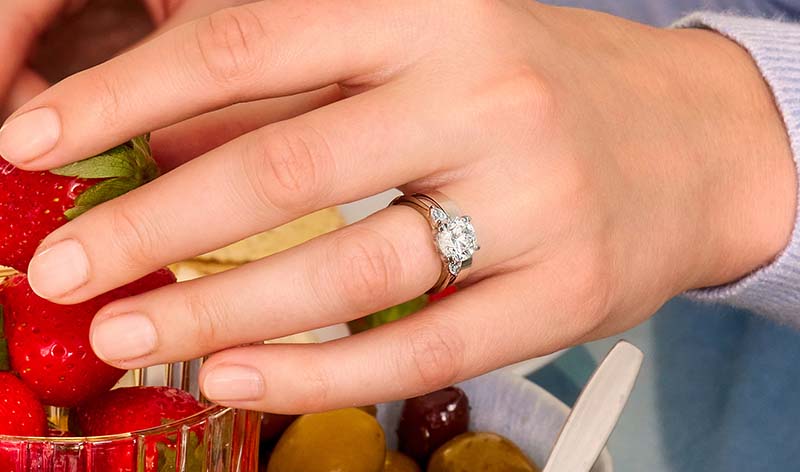When it comes to choosing the perfect ring for your special someone, the decision often boils down to two timeless metals: platinum and gold. But in today’s eco-conscious world, another factor has entered the equation: lab-grown diamonds. So, how do platinum and gold stack up against each other when paired with these sustainable gems?
1. Understanding Platinum Rings
Platinum rings have long been associated with luxury and prestige. Renowned for their durability and rarity, platinum bands offer a brilliant white shine that won’t fade over time. Additionally, platinum is hypoallergenic, making it an excellent choice for those with sensitive skin.
However, platinum rings come with a higher price tag compared to their gold counterparts. The density of platinum also means that it can feel heavier on the finger, lab diamonds cvd, which may not be to everyone’s liking.
2. Exploring Gold Rings
Gold rings, on the other hand, exude warmth and timeless elegance. Gold is a malleable metal, allowing for intricate designs and detailing that may not be possible with platinum. With options ranging from classic yellow gold to trendy rose gold, there’s a shade to suit every style.
While gold is more affordable than platinum, it is also softer and prone to scratching and bending. Depending on the karat purity, gold rings may contain alloys that can cause skin irritation in some individuals.
3. Lab Grown Diamonds: A Sustainable Option
In recent years, lab-grown diamonds have emerged as a sustainable alternative to mined diamonds. These diamonds are chemically and optically identical to natural diamonds but are created in controlled laboratory environments using advanced technology.
The production of lab-grown diamonds requires significantly less energy and water compared to traditional mining methods, making them an environmentally friendly choice. Additionally, lab-grown diamonds are free from the ethical concerns associated with diamond mining, such as child labor and conflict financing.
4. Platinum Lab Grown Diamond Rings
Pairing lab-grown diamonds with platinum rings offers a combination of elegance and longevity. Platinum’s natural white luster enhances the brilliance of the diamonds, creating a stunning display of sparkle. Platinum is also highly durable, ensuring that your ring will withstand the test of time.
5. Gold Lab Grown Diamond Rings
Gold provides a warm and inviting backdrop for lab-grown diamonds. Whether you prefer the classic appeal of yellow gold or the modern allure of white gold or rose gold, there’s a gold ring to match your style. Gold rings offer flexibility in design and can be easily customized to reflect your personality.
6. Comparing Durability
In terms of durability, platinum reigns supreme. Its density and strength make it resistant to wear and tear, ensuring that your ring will retain its beauty for years to come. Gold, while beautiful, is a softer metal and may show signs of scratching and bending over time.
7. Analyzing Cost
When it comes to cost, lab diamonds, gold has the edge over platinum. Gold rings are generally more affordable, making them a budget-friendly option for those looking to maximize their investment. However, it’s essential to consider the long-term value and durability of platinum when making your decision.
8. Aesthetics and Style
Platinum rings exude an air of sophistication and elegance, making them the perfect choice for those who appreciate classic beauty. Gold rings, on the other hand, offer versatility and warmth, allowing you to express your unique sense of style.
9. Maintenance and Care
Both platinum and gold rings require regular maintenance to keep them looking their best. Platinum rings can be cleaned with mild soap and water or a jewelry-specific cleaner, while gold rings may require additional care to prevent tarnishing and scratching.
10. Hypoallergenic Properties
If you have sensitive skin, platinum may be the better choice for you. Platinum is hypoallergenic, meaning it is unlikely to cause irritation or allergic reactions. Gold, especially in lower karat purities, may contain alloys that can trigger allergies in some individuals.
11. Personal Preferences: Which Metal to Choose?
Ultimately, the decision between platinum and gold comes down to personal preference. Consider factors such as your lifestyle, budget, and style preferences when choosing the metal that’s right for you. Whether you opt for the timeless elegance of platinum or the warmth of gold, your ring should reflect your individuality and personality.
12. Customization Options
Both platinum and gold offer endless possibilities for customization. Platinum’s strength allows for intricate detailing and engraving, while gold’s malleability makes it easy to create unique designs. Whether you prefer a classic solitaire or a vintage-inspired setting, there’s a ring design to suit every taste.
13. Environmental Impact
From an environmental standpoint, lab-grown diamonds offer significant advantages over mined diamonds. By choosing a lab-grown diamond, you can minimize your carbon footprint and support sustainable practices in the jewelry industry. Additionally, opting for platinum or gold from recycled sources further reduces the environmental impact of your ring.
Conclusion
When it comes to choosing between platinum and gold lab-grown diamond rings, there’s no right or wrong answer. Both metals offer unique benefits and aesthetic qualities, allowing you to find the perfect ring to symbolize your love and commitment. Whether you prioritize durability, affordability, or sustainability, you can rest assured that your ring will be a timeless expression of your love for years to come.

